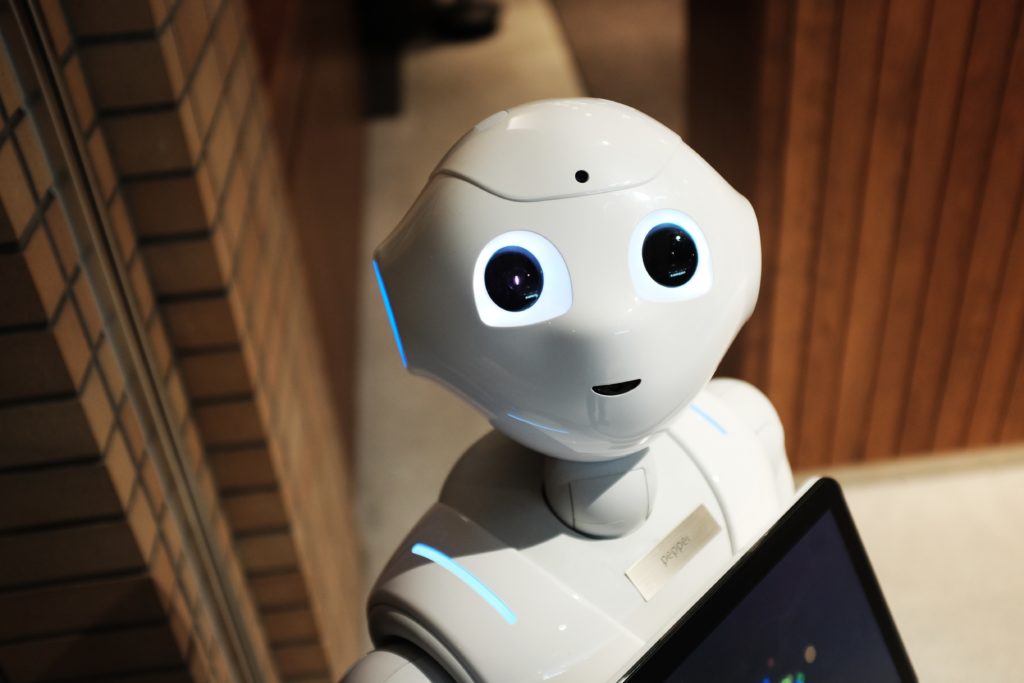By Yvonne Milosevic
Remember the Spike Jonze movie Her? In it, Theodore falls in love with his intuitive operating system, “Samantha.” That far-out concept felt groundbreaking in 2013. Flash forward to today, and automation is everywhere. Robots continue to replace humans in a variety of jobs across most sectors. But aside from their practical uses, researchers say robots may soon step in to fill our emotional needs as well.
-

Photo by Alex Knight on Unsplash
Say hello to Pepper
Tokyo-based SoftBank Robotics debuted Pepper, a humanoid robot companion, in 2015. It has appealing facial features and a compact body size about like that of a six-year-old child. Plus, Pepper recognizes a wide variety of human emotions and can have actual conversations.
Japan has some serious societal motivators for widespread investment in robotic technology. For one, its shrinking workforce and aging citizenry has triggered a severe nursing shortage. (Projections suggest 30% of its population will be elderly by 2025 ).
Other countries might consider relaxing immigration laws to attract foreign healthcare workers. But Popular Science notes that tech-loving Japan has a different approach to the challenge. It will depend on Robots like Pepper to supplement and replace human caregivers. Awww, check out that snuggle with Dr. Neil Degrasse Tyson.
“The face is very good at positive and negative expressions,” explains Affectiva CEO Rana el Kaliouby in this interview with VentureBeat. “The voice, however, is very good about the intensity of the emotions,” she adds. “We can detect smiles through your facial expression, but then we can identify specifically when you’re laughing through voice.”
From speaker dock to confidante
Whereas Pepper is cute and human-like, Travis looks like a diminutive hammerhead alien. Inventor Guy Hoffman at Cornell University designed this social robot as a dancing speaker dock.
Sure enough, participants in the study came away feeling as if the robot “got” them. When Travis did not move, and displayed messages such as, “Okay, please continue,” people were less likely to consider Travis a good listener.
The researchers also tested whether Travis could boost someone’s confidence. Participants in the second study talked to Travis about a good date they recently had. His text reactions for the dating recaps included feedback like, “Wow, that’s really great!” and “What a pleasant experience!” Once again, people felt warm and fuzzy toward Travis. And they didn’t care that he looks nothing like a humanoid.
“Participants in both studies responded to the survey questions by saying they found Travis more social and competent when the robot emotionally engaged with them. They were also more open to the idea of robot companionship after interacting with Travis when he responded emotionally as opposed to when he was unresponsive.”
The human-robot bond
Eli Finkel, a professor of management and operations at Kellogg School of Management, helped lead the Travis research. He believes people will bond with machines that seem to understand, validate and care about what they think and feel. And really, isn’t that exactly what a best friend does?
“People are living longer, many are outliving spouses, and a lot of people are lonely for whatever reason. Socially sensitive robots could serve as companions for those kinds of people,” Finkel tells Kellogg Insight.
Now, whether you and a robot can have a deep, meaningful friendship is still up for debate. At this point, it’s more of a philosophical question than technological one. But, if robotic advances keep up their current pace, it’s a question we’ll be grappling with sooner than we ever imagined.



